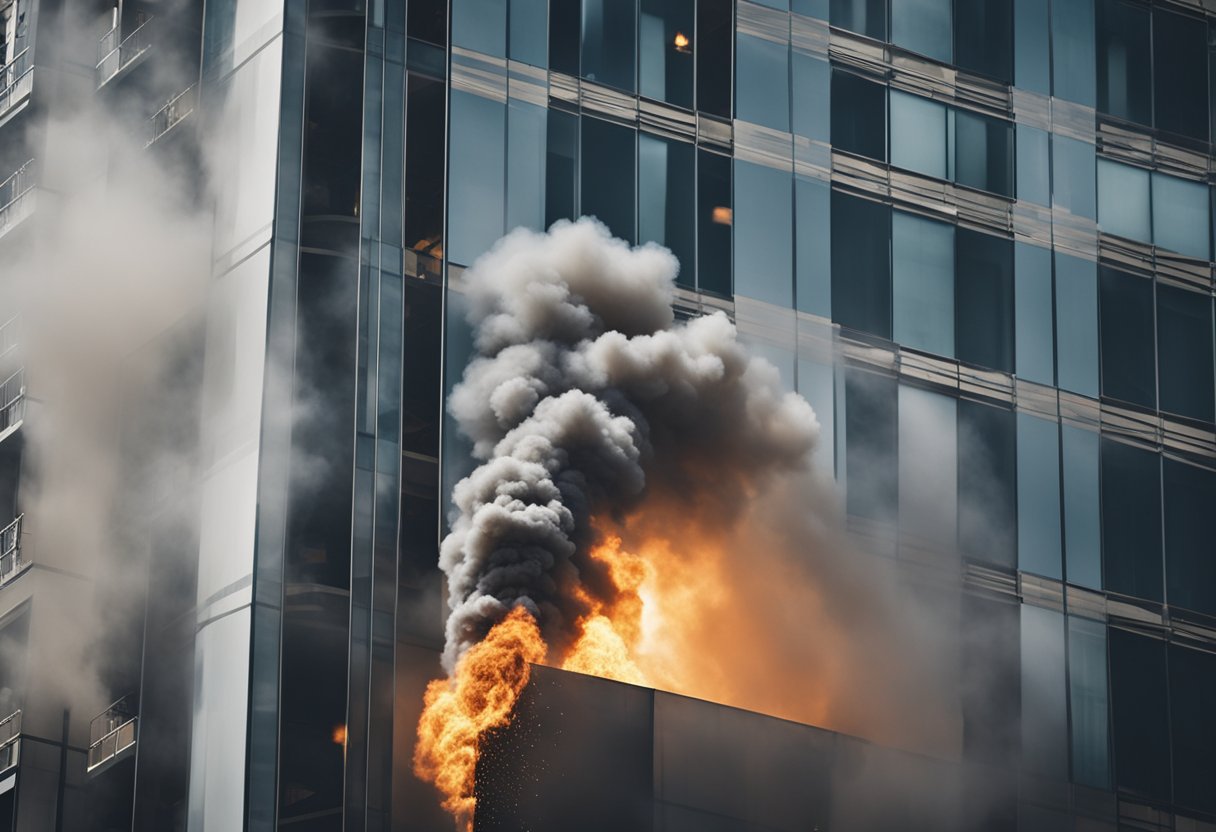In the ever-evolving landscape of high-rise building safety, one aspect stands out with significant importance: smoke mitigation. During a fire, smoke poses a deadly threat, often spreading faster than flames and obstructing evacuation routes. Elevator smoke curtains play a critical role in containing smoke, protecting occupants, and maintaining a safer environment within tall structures.
Elevator shafts can act as conduits for smoke, allowing it to travel rapidly between floors. Smoke curtains operate as barriers, effectively sealing off these pathways and preventing smoke infiltration. Industries dealing with skyscrapers are increasingly recognizing the importance of integrating these curtains into their fire safety protocols. Implementing this technology contributes to compliance with stringent fire safety regulations and enhances the overall safety of high-rise buildings.
Essential Role of Elevator Smoke Curtains in Fire Safety
Elevator smoke curtains play a crucial role in enhancing fire safety by restricting smoke movement in high-rise buildings.
Understanding Elevator Smoke Curtains
Elevator smoke curtains are barriers designed to prevent smoke from spreading through elevator shafts during a fire. They activate automatically when smoke detectors identify smoke, unfurling to form a tight seal. Made from heat-resistant materials, these curtains ensure elevator shafts don't become conduits for smoke. This containment helps reduce smoke inhalation risks and provides clear air for occupants seeking exits.
The technology behind these curtains is both simple and effective. They rely on gravity-fail-safe systems, meaning they deploy even during power outages. While traditional smoke barriers often obstruct building aesthetics, modern smoke curtains offer a discreet alternative that integrates seamlessly into architecture.
Design and Installation
The design of smoke curtains must cater to the specific needs of a building. Customization allows them to fit various elevator dimensions and operational requirements. Professional installation ensures optimal performance, as incorrect setups can lead to ineffective smoke containment.
Elevator smoke curtains should be installed in strategic locations where they will be most effective at blocking smoke. This includes the tops of elevator shafts and other critical points. The installation process involves precise measurements and expert handling. Maintenance is also essential to ensure long-term functionality, with regular inspections recommended.
Regulatory Compliance and Standards
Compliance with fire safety standards is mandatory. Smoke curtains for elevators must adhere to guidelines set forth by organizations such as NFPA and ICC. These standards ensure the curtains effectively prevent smoke spread, enhancing overall fire safety.
Manufacturers must provide documentation proving their products meet regulatory requirements. This includes passing rigorous testing to verify smoke containment capabilities. Building managers should work closely with certified professionals to select curtains that not only meet standards but also fit specific building needs.
Benefits and Effectiveness of Smoke Curtains
Elevator smoke curtains play a crucial role in enhancing fire safety by containing smoke, facilitating safe evacuation, and protecting building integrity.
Containment of Smoke and Toxic Gasses
Smoke curtains serve as barriers that prevent the spread of smoke and toxic gasses. These curtains can automatically deploy when fire alarms are triggered, ensuring rapid response and containment. Without physical barriers like smoke curtains, smoke can travel through elevator shafts, spreading quickly between floors.
By confining smoke to specific areas, elevator smoke curtains maintain air quality in other parts of the building. This containment is vital for minimizing respiratory risks to occupants and firefighters. Furthermore, controlling smoke spread helps reduce overall damage from the corrosive nature of these toxic gasses, limiting cleanup and repair costs post-incident.
Facilitating Safe Evacuation and Rescue Operations
Smoke curtains aid in evacuation by keeping escape routes clear from smoke. As smoke is confined away from egress paths, visibility in corridors and stairwells remains higher, aiding swift movement. Occupants and first responders benefit from the improved conditions, as confusion and disorientation from smoked-filled pathways are reduced.
These curtains also save time during rescues. Quick deployment of smoke curtains means rescue operations can commence under safer conditions, improving the efficiency and speed of emergency response teams. Ultimately, this leads to higher success rates in safely evacuating individuals, especially from upper floors of high-rise buildings.
Protection of Property and Structural Integrity
Protecting a building's structural elements during a fire is crucial. Elevator smoke curtains help in shielding these elements from fire damage by preventing smoke and heat from reaching critical supports. The curtains help preserve fire-resistant barriers by focusing heat away from vulnerable components.
They also protect valuable property within a building by reducing the chances of smoke damage to furnishings, electronics, and documentation. By limiting the spread of smoke to other areas, elevator smoke curtains can significantly cut down the potential for costly repairs and losses following a fire incident.










